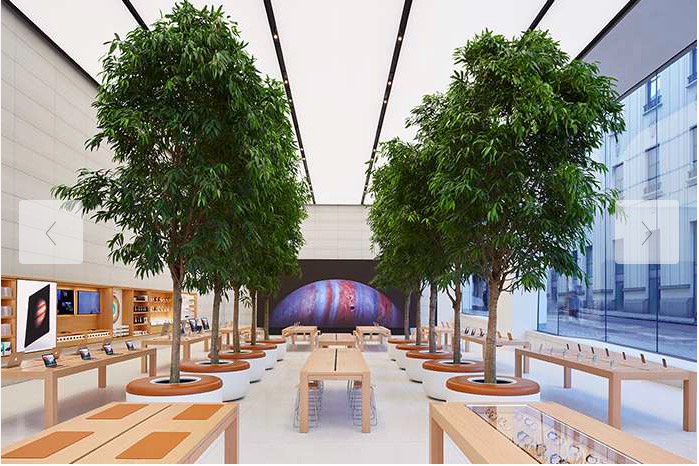Will Apple’s retail stores become remote working hubs?

Imagine hot desks here
There may be some signs of hope for local shops as COVID-19 changes working habits and sees big companies abandon traditional offices in favor of distributed WFH models.
The WFH thing
This is driving more employees to make more use of local shops and services, and also means we’ll see locally based service models such as colocation hubs and on-demand office and conferencing facilities emerge, some believe.
In the UK, the Royal Institution of Chartered Surveyors found that 93% of commercial properties expect business to scale back their office space over the next two years.
Sridhar Iyengar of Zoho Corporation, publisher of some cutting-edge solutions to support remote working, observed:
“The pandemic has taught thousands of businesses that remote working can be a successful model which reduces overheads and, if organised with the right tools, can also boost productivity.
It is no real surprise that businesses are thinking about making at least part-remote working a permanent feature and as a result are scaling back their office space in the next two years. We may find businesses will be in no rush to return to the traditionally city based large HQ office permanently.”
This could drive some positive changes, pushing business out of overcrowded and expensive office space back into the heart of communities, enabling new distributed working platforms, and possibly reviving both rural and suburban high streets.
This should help improve local business diversity and wealth distribution, while enabling fresh business opportunity in terms of local support function.
“Bringing more business to locations outside of cities could certainly impact and revive the local high street, many of which have been in decline for some time now,” Iyengar said.
“We view the best sustainable model as a part-remote and part-in office environment, as this is best for employee health and wellbeing. A beneficial secondary effect could also be a reduction in commuting, which will have a positive impact on the environment as CO2 emissions are reduced.”
As footfall patterns change, how will Apple react?
It may seem strange to note that Apple may also be able to pivot its retail business to profit from this change.
At present consumer-focused, these spaces could relatively easily be repositioned as creative hubs, offering access to products as in any other consumer retail store, but also offering training, on-site support, high-bandwidth secure internet access and serviced ‘hot desks’ for enterprise workers of all stripes.
That town hall approach that drove Apple retail for some time may finally be realized.
There is however the challenge that in some cases as footfall traffic patterns change, some of the company’s larger stores may no longer prove as viable, while other areas hitherto unserved by Apple Retail may become more viable than before.
“Offices and shops in city centres need support as people stay away from their normal workplace, and although local shop hubs are benefitting the market must be addressed as a whole,” warned RICS.
With considerable investment in software and hardware already made across Apple’s retail arm, might this become a new offering?
Please follow me on Twitter, or join me in the AppleHolic’s bar & grill and Apple Discussions groups on MeWe.




